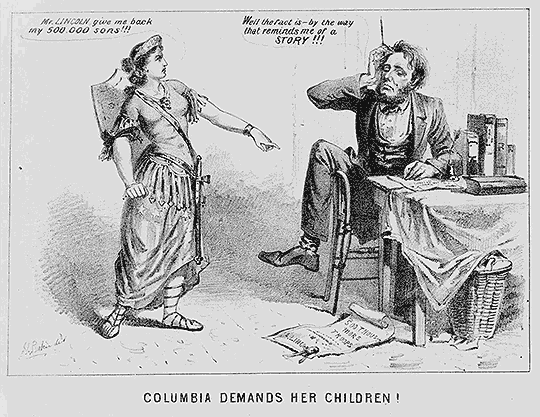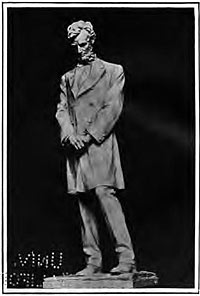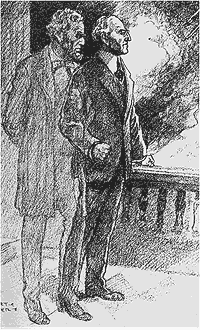Abraham Lincoln has occupied a revered position in American history schoolbooks. It is an image at odds with how many Americans perceived him at various times during his Presidency. Southerners and Democrats viewed him variously as coarse, ignorant, out of his depth, insensitive, incompetent, and incoherent. Even fellow Republicans felt cause to jump on the anti-Lincoln bandwagon, depicting the President as an uncouth Westerner as a buffoon who substituted ribald humor for serious policy, and as secret southerner with pro-slavery sympathies.
When a war is going badly for a wartime president, these charges accumulate at a rapid rate. The war went badly for Lincoln through much of his first three years in office and at least until the fall of 1864. The major victories at Gettysburg and Vicksburg during July 1863 offered only a temporary respite from the sniping. For the American public and his political rivals, these triumphs mattered less as the war dragged on inconclusively. And when General Ulysses S. Grant’s springtime offensive in 1864 piled up body counts instead of clear victories, the din against Lincoln reached a crescendo. It did not help that 1864 was also a Presidential election year. Opponents in both the Democratic and Republican parties were already circling around his purported carcass by the summer. Lincoln himself doubted he would be re-elected. Even the normally supportive Harper’s Weekly turned on the President with a blistering cartoon depicting Lincoln and “Columbia” (the female embodiment of America) arguing over the proposal to draft an additional 500,000 men into the army to replace the mounting casualties of Grant’s bloody campaign.
“Columbia Demands Her Children” 1864. Columbia demands, “Mr. Lincoln, give me back my 500,000 sons!!!!” Lincoln, unfazed, sits at a writing desk, his leg thrown over the chair back. A proclamation calling for “500 Thous. More Troops,” signed by him, lies at his feet. He replies, “Well the fact is—by the way that reminds me of a Story!!!” The artist refers to the false report published in the New York World that Lincoln had irreverently joked on the battlefield of Antietam in September 1862. Bernard F. Reilly, Jr., American Political Prints, 1766–1876: A Catalog of the Collections in the Library of Congress (Washington, D.C.: Library of Congress, 1991).
Democrats were relentless against Lincoln throughout his Presidency but especially after he issued the preliminary Emancipation Proclamation in September 1862. The Democrats constantly used race as an issue in their political campaigns, their literature depicting him as a reprobate trodding on the Constitution while he signs the Emancipation Proclamation or as a monkey (a favorite Democratic caricature of the President), waving the proclamation to an excited miniature animal-like black child. Perhaps the most significant “contribution” of the Democrats to American culture was the coinage of the word “miscegenation” during the 1864 Presidential campaign. A depiction of a “Miscegenation Ball” in 1864 allegedly hosted by Lincoln conjures up all of the horrors of race mixing in scenes of lewdness and drunken carousing. Union General William T. Sherman saved Lincoln’s re-election bid when he marched into Atlanta in early September 1864. The successful Shenandoah Valley campaign of General Philip Sheridan in early fall further enhanced Lincoln’s re-election prospects. And, with more than 70 per cent of soldiers voting for him, Lincoln easily turned back his Democratic opponent, former Union General, George B. McClellan. In the meantime, Grant kept grinding away at General Lee’s disintegrating Army of Northern Virginia. These victories began the rehabilitation of Lincoln, at least among Republicans.
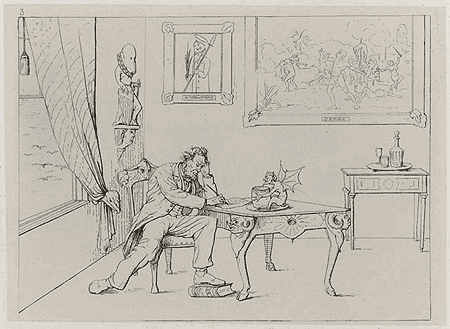 Lincoln Writing the Emancipation Proclamation; drawn by Confederate dentist, Adalbert J. Volck of Baltimore, 1863. Library of Congress, Prints and Photographs Division.
Lincoln Writing the Emancipation Proclamation; drawn by Confederate dentist, Adalbert J. Volck of Baltimore, 1863. Library of Congress, Prints and Photographs Division.
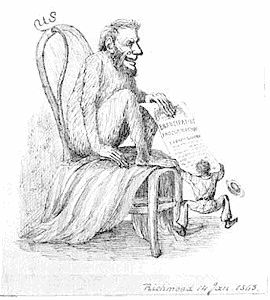 Lincoln as a Monkey; holding the Emancipation Proclamation; drawn by David Strother of Richmond, VA, 1863. Lilly Library, Indiana University.
Lincoln as a Monkey; holding the Emancipation Proclamation; drawn by David Strother of Richmond, VA, 1863. Lilly Library, Indiana University.
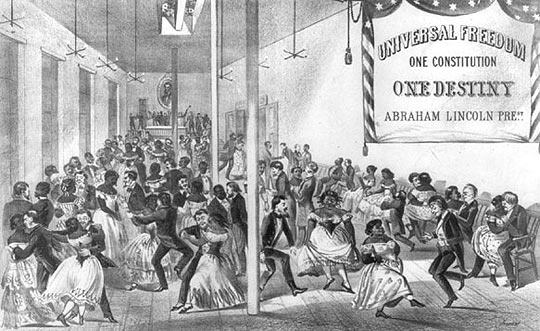 The Miscegenation Ball, Lincoln Campaign Headquarters, New York City, September 1864. Library of Congress, Prints and Photographs Division.
The Miscegenation Ball, Lincoln Campaign Headquarters, New York City, September 1864. Library of Congress, Prints and Photographs Division.
What made Lincoln a revered figure in American history schoolbooks was his assassination at the hands of John Wilkes Booth on Good Friday, April 14, 1865. The act transformed Lincoln from a president to a Christ-like martyr. From then on, at least until the late twentieth century, most schoolbooks viewed Lincoln’s Presidency through the filter of his martyrdom. Interestingly, some of the earliest schoolbook references to Lincoln placed him in the pantheon of American literature as opposed to politics, as if the political arena were too mundane to capture the genius of this demi-god. Lincoln appeared alongside such figures as Henry Wadsworth Longfellow, John Greenleaf Whittier, and Ralph Waldo Emerson. There was scarcely a northern schoolboy who had not memorized the Gettysburg Address. It was an era when American literati enjoyed much greater public approbation than mere politicians.1
The first school history text that discussed Lincoln was A Centennial Edition of the History of the United States (1876) written by Benson L. Lossing, a prominent Philadelphia attorney. His account read more like a brief for greatness than an objective historical analysis. Lossing presented the northern view of the Civil War and Lincoln’s role in that war. He referred to southerners as “conspirators against the life of the Republic,” and to northern Democrats as “disloyal men.” Lincoln was the Great Emancipator, always above the political fray, yet accessible to the common man. These themes of Lincoln as the freedom-giver, and as a disinterested servant of the people would recur in schoolbooks over the next century.2
Lincoln’s martyrdom on Good Friday provided another common theme in the decades after the Civil War. In this view, Lincoln assumed God-like qualities in both popular and textual images, heralded as a “Martyr Victorious,” as the “Saviour” of the nation alongside George Washington. The religious theme was evident in the reverential portrayals of the martyred President. Lincoln’s portrait appeared on the Lord’s Prayer which often hung in middle-class homes so parents could teach their children about Lincoln’s sacrifice for the nation. The Great Emancipator theme attained an iconic presence considerably beyond schoolbooks. The public Lincoln reinforced the textbook Lincoln, and vice versa. Thomas Ball’s famous emancipation statue of Lincoln and the kneeling slave unveiled in Washington, D.C. on April 14, 1876 reflected the appropriate position between black and white Americans in the late nineteenth century and the historical interpretation which prevailed for nearly a century that the martyred president was primarily responsible for the freedom of the slaves.3
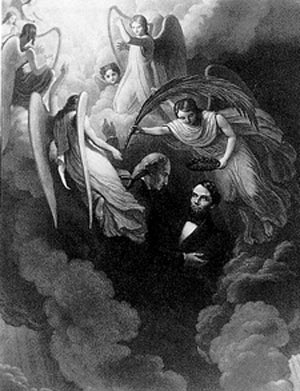 John Sartain’s “Abraham Lincoln, The Martyr Victorious.” Lincoln is welcomed into heaven by George Washington, 1865. Huntington Library, San Marino, CA.
John Sartain’s “Abraham Lincoln, The Martyr Victorious.” Lincoln is welcomed into heaven by George Washington, 1865. Huntington Library, San Marino, CA.
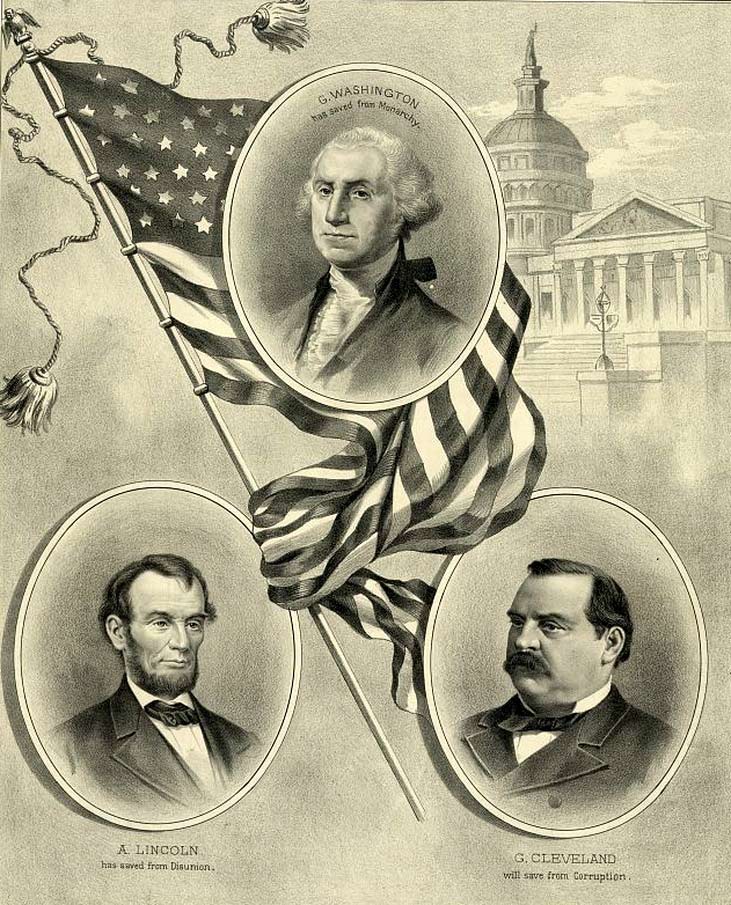 “Saviours of Our Country.” An indication how Lincoln had transcended party and ideology by the 1880s, as he appears on this campaign poster for the Democratic presidential candidate, Grover Cleveland, along with George Washington, 1884.
“Saviours of Our Country.” An indication how Lincoln had transcended party and ideology by the 1880s, as he appears on this campaign poster for the Democratic presidential candidate, Grover Cleveland, along with George Washington, 1884.http://3.bp.blogspot.com/_TZ4zYEBSw1I/R7oGWITinfI/AAAAAAAADuc/Cz5S6_St0QY/s1600-h/presidents_day_4.jpg
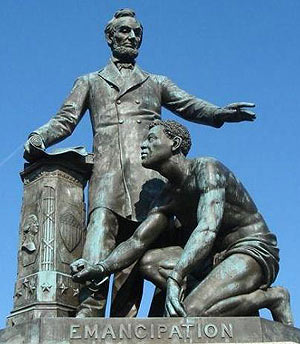 Freedman’s Monument, Lincoln Park, Washington, D.C.; sculptor: Thomas Ball. Library of Congress, Prints and Photographs Division.
Freedman’s Monument, Lincoln Park, Washington, D.C.; sculptor: Thomas Ball. Library of Congress, Prints and Photographs Division.In the segregated school systems which emerged during and after Reconstruction, Lincoln became a model hero for black schoolchildren. While African Americans could not, of course, replicate Lincoln’s trajectory from log cabin to the White House, he could serve as a symbol of reverence enabling blacks to connect their story to the American story for the first time. The photograph of the black child kneeling before a Lincoln family portrait underscored the Great Emancipator’s iconic status in the black community.
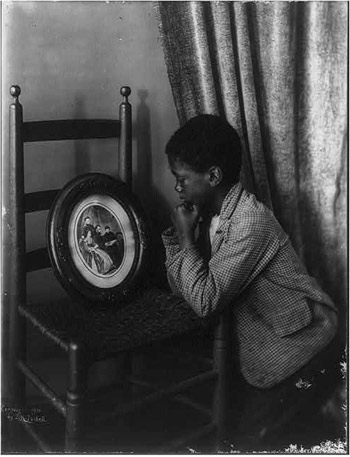 Black child kneeling before Lincoln family portrait, 1898.
Black child kneeling before Lincoln family portrait, 1898.Library of Congress, Prints and Photographs Division.
At the turn of the twentieth century, changing trends in textbook publishing affected the Lincoln image in schoolbooks. The founding during the 1890s of such groups as the United Daughters of the Confederacy and the Sons of Confederate Veterans led to southern versions of U.S. history textbooks, as these organizations sponsored alternative histories more friendly to southern perspectives of the Civil War and Reconstruction in particular. Surprisingly, the southern schoolbooks did not recycle the negative images of Lincoln common during the Civil War. Rather, they were only mildly critical and occasionally praiseworthy. The writers reserved their invectives for Radical Republican Congressmen and marauding Union generals. The books also gave more than equal time to Lincoln’s Confederate counterpart, Jefferson Davis, as is apparent in the portraiture of both leaders in J. William Jones’ School History of the United States (1896), a leading southern textbook of the era.
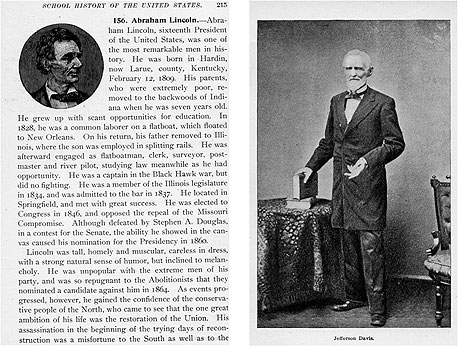 Abraham Lincoln and Jefferson Davis; Lincoln in cameo, and Davis in full portrait.
Abraham Lincoln and Jefferson Davis; Lincoln in cameo, and Davis in full portrait.J. William Jones, School History of the United States, 215–16.
Jones framed Lincoln as a moderate among radical jackals: “Abraham Lincoln,” Jones wrote, “was one of the most remarkable men in history . . . . He was unpopular with the extreme men of his party, and was so repugnant to the Abolitionists that they nominated a candidate against him in 1864 . . . . His assassination in the beginning of the trying days of reconstruction was a misfortune to the South as well as to the North, for none dared go as far as he in conciliatory and just movements toward the vanquished.” Of course, what Reconstruction policies Lincoln might have followed remained conjecture, but Jones was able to read what he wanted into Lincoln’s purported inclinations and thus absolve the President from any wrong-doing for the “horrors” of Reconstruction. Southern schoolchildren, therefore, could join the national consensus on Lincoln at a time when both northerners and southerners urged sectional reconciliation. Further, they need not relinquish their view of Reconstruction as a tragic imposition on southern whites by misguided northerners and unfit African Americans. By 1900, almost all American history textbooks, North and South, followed that interpretation.4
Susan Pendleton Lee’s New School History of the United States (1900) eventually eclipsed Jones’ book as the preferred U.S. history text in the South. Lee was even more of a southern patriot in her writing than Jones, but she grudgingly gave Lincoln some credit. Her description of Lincoln, though not especially flattering, recognized some of his qualities: “Abraham Lincoln was of obscure parentage, of uncouth appearance and awkward manners. His early education was very limited, but, as he grew older, he improved himself by studying a few good books—especially the Bible, Shakespeare, and mathematical works . . . . He had an excellent mind, a strong character, and sincere convictions. With a keen sense of humor and a fearless disposition, with an inexhaustible store of anecdote and illustration, he became a good speaker, and was in every way fitted to be a successful leader of his party.”5
By the early 1900s, professional historians, often with doctorates or graduate training from Germany, began to take over the work of writing U.S. history schoolbooks. Despite the change in authorship, the reverence for Lincoln persisted, as did the southern perspective on the Civil War and Reconstruction. School surveys of the era identified Washington and Lincoln as the two greatest Americans, with other luminaries far behind. Willis Mason West’s American History and Government (1913) became the most widely used schoolbook between World War I and the Great Depression of the 1930s. West focused on Lincoln’s wartime leadership and on his emancipation of the slaves, both of which he viewed as extraordinary. As a tribute, West placed Lincoln’s portrait on the frontispiece of the volume. The frontispiece of schoolbooks, like covers today, reflected the interpretive emphasis and inclinations of the book’s contents. This was also a time when the school curriculum expanded to give greater emphasis to the Civil War. Prior to the early twentieth century, most curricula allotted considerably more time to the Revolutionary War.6
With the celebration of the Lincoln centennial in 1909, the martyred president became America’s man for all seasons. Almost every Progressive cause from labor rights to woman suffrage enjoyed the Lincoln imprimatur, even though he rarely expressed any opinions on these issues. Sitting presidents invoked Lincoln’s name to legitimate their policies. This was especially so with Teddy Roosevelt and his trust-busting agenda and Woodrow Wilson’s justification for his foreign policy. Wilson, a textbook writer himself, had noted in a work published before he became President that he admired how Lincoln had expanded the powers of the presidency during wartime yet still remained within the boundaries of the Constitution.
As for woman’s suffrage and women’s rights generally, Lincoln emerged as a role model during the final push for the suffrage amendment in 1919. An article in the Literary Digest, a popular magazine of the era, praised Lincoln’s feminine qualities, especially his role as a national mother of sorts. The writer explained that Lincoln’s own mother “left on Lincoln’s memory an overwhelming impression, so Lincoln himself physically and mentally ‘mothered’ his neighbors, his State, his country.” The writer concluded, “He displays an understanding of motherhood unsurpassed in English literature . . . embody[ing] universal motherhood as no man has since Christ.” Only a few months later a book appeared comparing Lincoln more explicitly to Christ, not necessarily to the benefit of the latter.7
Even the pro-southern epic film, “Birth of a Nation,” a Hollywood adaptation of Thomas Dixon’s best-selling novelistic tribute to the Ku Klux Klan, The Clansman (1905), had something nice to say about Lincoln. On hearing of Lincoln’s assassination, one of the southern protagonists worries, “Our best friend is gone. What is to become of us now?” The horror of Radical Republican rule which follows on the screen, thus becomes disconnected from the martyred President and, in fact, something he would have likely prevented. Some of this hagiography found its way into schoolbooks, though Lincoln’s partnership with the common man diminished as a theme. The God-like Lincoln became the standard interpretation and his perfection became a didactic goal for all students, especially for newly arrived immigrants.
The unprecedented immigration that occurred between 1890 and 1920 had a significant impact on coverage in history schoolbooks. Typically, authors had dealt either negatively with immigrants (especially Irish Catholics) or hopefully that they would divest themselves of Old World ways and become true Americans. The assimilationist narrative became dominant by World War I. Texts used Lincoln as a teaching tool to orient newcomers to American culture and politics. Lincoln’s protean image allowed each immigrant group to take away something from the martyred president’s exemplary life that corresponded most closely with the experiences of that group. “Far more than any other American,” a schoolteacher observed in 1917, “Lincoln makes the immigrants feel this is their country as well as the country of the native-born.” All immigrant schoolchildren were “drawn close to the ragged boy whose childhood was filled with struggle and hardship,” but Polish schoolchildren “appreciate more Lincoln’s economic struggle, the limitations of his country life, for they come of a long line of tillers of the soil; Jewish children, on the other hand, are more interested in him as the epic rescuer of the oppressed, the man who freed the slaves.” Immigrant children not only learned about Lincoln from their schoolbooks, but also from plays and recitations at their schools.8
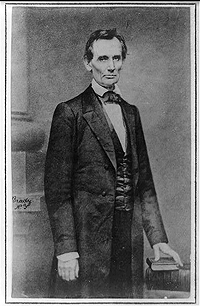 “The Wanderer Finds Liberty in America,” 1919, Milwaukee Americanization Pageant for Jewish schoolchildren.State Historical Society of Wisconsin, Madison, WI (WHi [X3]22831).
“The Wanderer Finds Liberty in America,” 1919, Milwaukee Americanization Pageant for Jewish schoolchildren.State Historical Society of Wisconsin, Madison, WI (WHi [X3]22831).Changing emphases in schoolbooks underscored the importance of teaching immigrant children the rudiments of American citizenship. Albert Bushnell Hart, a prominent Harvard historian, authored the most popular history schoolbook during the 1920s and 1930s, School History of the United States (1918). He devoted the important frontispiece to a color portrait of immigrants sailing into New York harbor past the Statue of Liberty. Hart offered the most comprehensive and sophisticated treatment of Lincoln to date in history schoolbooks. Hart brought the martyred president down to an earthly realm by stressing his connection to the common people, a theme usually lost in earlier treatments, but more calculated to resonate with immigrant schoolchildren.
There was little in his training and habits to suggest a great man. His clothes did not fit him; he was fond of telling funny stories; he would see all his callers. Poor and friendless soldiers, and mothers of soldiers, could always find their way to the great President . . . . Upon this backwoods raill-splitter fell the duty of commanding two million soldiers . . . . Lincoln’s greatness was due chiefly to his wonderful power of knowing what was going on in the hearts of the people. His brief speeches are full of noble spirit, of thoughts as true for the South as for the North.9
Still, Hart’s text continued to emphasize the reconciliation theme first advanced in the southern-oriented schoolbooks of the late nineteenth century. “By common consent,” he wrote, “Abraham Lincoln is the greatest American of the Civil War period. Lincoln never forgot that he was born in Kentucky, and he understood the southern people.”10
The themes of sectional reconciliation and Lincoln as the Great Commoner dominated historical works on Lincoln from the 1920s to the 1950s. The Lincoln Memorial, erected in 1922, symbolized these themes. Engraved on the northern wall is the portion of the Second Inaugural stressing sectional reconciliation; on the southern wall, the Gettysburg Address, meant to refer to all soldiers, North and South, and above these words the Angel of Truth joins the hands of symbolic North and South in everlasting union. Carl Sandburg’s biography of Lincoln, the first volume of which appeared in 1926, and soon became required reading in many school districts across the nation, elaborated the “Lincoln-as-common-man” theme most explicitly. Sandburg presented Lincoln as a westerner, a frontiersman, a “man of the people.” Instead of Lincoln orbiting a heavenly sphere, he is a down-to-earth rail-splitter and a hard worker, images that suited more the needs of the Great Depression than did a distant patriarch.11
During the 1940s, a new generation of schoolbooks emerged, but the basic themes of Lincoln as the prototype of the common man and as the role model for sectional reconciliation held forth. The southern view that the war was fought primarily over states’ rights and that the Reconstruction era was a mistaken experiment foisted on a suffering South, continued to prevail as well. A popular text of the 1940s, John Holladay Latané’s The History of the American People (1941) perpetuated the southern perspective on the war and Reconstruction while preserving the positive view of Lincoln. Much like D. W. Griffith’s “Birth of a Nation,” and David O. Selznick’s “Gone With the Wind,” Latané presented Lincoln’s assassination as a “calamity” for the South.12 As for the Emancipation Proclamation, while schoolbooks outside the South earlier in the century included unstinting praise for the document, Latané’s treatment was more muted: “It is important to remember that the proclamation was strictly a war measure.” Gone are the references to any moral basis for the end of slavery. This reflected the national consensus at the time that racial segregation and white supremacy best suited the condition and capabilities of African Americans. As for black voting rights, Latané noted, “Lincoln had no intention of conferring the franchise on the Negroes as a class, though he did hope to see it conferred by the states on a few of the more intelligent.”13 Compare this with Willis Mason West’s treatment early in the twentieth century when distinctive northern and southern perspectives on the war and Reconstruction prevailed:
Still, this expenditure of blood and treasure was well worthwhile. The war struck shackles from four million men . . . . It decided beyond further appeal, that the United States is a Nation, not a confederacy. It was the means whereby the more progressive portion of the country had to force its advanced political thought and its better labor system upon the weaker, stationary portion (italics in the original text).14
The importance of developing a consensus view of American history during the Cold War focused on Lincoln’s contributions to fostering sectional reconciliation and racial harmony. But with the advent of the civil rights movement in the 1950s and 1960s, historical scholarship took a more critical view of the moral equivalency between North and South. Slavery supplanted states’ rights as the major cause of the Civil War, and Reconstruction, rather than an era of Republican oppression and black misrule, emerged as a lost opportunity to implement racial equality. Oddly enough, the new schoolbooks treated Lincoln more critically than their southern-leaning predecessors. Few of the Founding Fathers and their successors escaped the scrutiny and critical evaluation of professional historians from the 1960s onward. The sixties were years of revolt in American culture, and historical scholarship participated in the break from traditions. Lincoln may still have been the “Great Emancipator,” but he was not the “Great Integrator.” Rather, historians noted, Lincoln supported schemes to colonize freed slaves in Africa, even after the start of the Civil War. Further, Lincoln’s moral opposition to slavery notwithstanding, his comments during the Lincoln-Douglas debates, historians argued, reflected a belief in black inferiority, or at least a willingness to compromise social equality for the votes of his white constituents. Some African-American historians, inspired by Black Power ideology, depicted Lincoln as a misguided white liberal at best, and a racist at worst. Finally, in the era of Vietnam and Watergate, Lincoln’s use of the war powers clause of the U.S. Constitution to revoke habeas corpus, imprison dissidents, and stifle the press, had a remarkably contemporary ring in the context of Richard Nixon’s Imperial Presidency.15 In the context of Black Power, the depiction of Lincoln as a president with feet of clay was perhaps not surprising. But, while it can be instructive to use contemporary issues to provide a perspective on historical figures, it is another matter to hold those individuals to the same standards and principles of Americans living 150 years later. Lincoln’s racial views may seem archaic or even reactionary in the early twenty-first century, but we must present him within his own historical context.
During the 1970s and 1980s, when schoolbooks moved away from equating American history with the history of white males, the results were positive overall, as African Americans and women became integral parts of the historical narrative. The difficulty, however, of portraying history from the bottom up, is that larger themes tend to be submerged and a relativism emerges that renders groups more important than certain individuals in creating significant changes in American life.16 Soldiers and slaves became the protagonists of the Civil War, not Lincoln, Davis, Grant, or Lee. Without an understanding of the leaders, however, it may not be possible to understand and appreciate the activities, accomplishments, and failures of the cast of thousands. Simply put, some individuals are more crucial to move America along on the journey to fulfill the promise of the Declaration of Independence. Lincoln always believed that the founding document’s declaration that “all men are created equal,” included the African American.
A better balance began to appear in schoolbooks by the late 1990s. Historians recognized that social history without political history is only partial history, and that leadership sometimes does indeed flow from the top down. In this altered historiographical context and the altered historical context after September 11, 2001, a new perspective on Lincoln has emerged in the schoolbooks. As always, the current Lincoln reflects historical scholarship and contemporary American life. For all our protestations that historians are “originalists,” that is, we study historical figures only within the context of their times, we are affected by the world around us. This enables us to view historical figures from shifting perspectives and to ask new questions of them and of the documents they have left behind. As long as the present does not become the agenda for the past, such presentism can be informative and helpful, especially for students who are constantly asking us, “why is history relevant to our lives?”
In The American Journey: A History of the United States, first published in 1998 and a fifth edition published in 2009, the authors blend scholarship and contemporary American life to present a more complex Lincoln. New to the portrait is an exploration of Lincoln’s religious views. Although he never joined a church, religious imagery and Biblical quotations filled his best speeches. Like most Americans of that era, he was at home in religious phraseology as knowledge of the Bible was widespread. Placing the American experiment with democratic government in the context of the world’s “last best hope,” Lincoln believed that slavery compromised the moral leadership of the U.S. in the world. He invested the Union cause with a moral sensibility and the Declaration of Independence and the Constitution as the holy documents of the people. Thus, he elaborated a nonsectarian civil religion grounded in the nation’s founding documents.
The second innovation is more of a reiteration of an older theme that fell away after World War II. It harks back to Carl Sandburg’s work of the 1920s in presenting Lincoln as a westerner, an individual aware of the importance of the federal government in tying a geographically expanding nation together with internal improvements and of keeping the West pure (i.e., free from slavery) for all American citizens. Lincoln’s sense of humor, which frequently moderated tense situations, also derived from his frontier environment.
The third interpretive innovation involves Lincoln and the Civil War. The book clearly notes the role of African Americans in stealing their freedom, though the Emancipation Proclamation placed the force of the national government behind the cause of freedom and helped the war effort. The narrative also demonstrates the active role Lincoln took in prosecuting the war and, yes, in sometimes stretching the Constitution to promote the Union cause, policies that generate heated classroom discussion, especially in the contemporary context of the war in Iraq and the detention facilities at Guantanamo Bay in Cuba.
Finally, through the use of visuals—for this is the most visual generation of students we have ever taught—the textbook demonstrates a fact of the war that troubled Lincoln greatly—the mounting death toll and how it aged the President during the four hard years of war. The book raises the question about the costs of war, and of the freedom which came as a result of that war.17
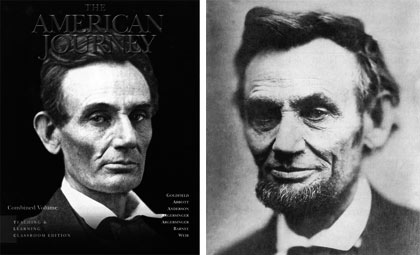 Two Portraits of Abraham Lincoln; the first taken in 1859 in New York City, just prior to his famous speech at the Cooper Union, and the second taken four days before John Wilkes booth assassinated him in Ford’s Theater. The two photographs, taken less than six years apart, reflect the great toll taken by a long and bloody civil war.
Two Portraits of Abraham Lincoln; the first taken in 1859 in New York City, just prior to his famous speech at the Cooper Union, and the second taken four days before John Wilkes booth assassinated him in Ford’s Theater. The two photographs, taken less than six years apart, reflect the great toll taken by a long and bloody civil war.Library of Congress, Prints and Photographs Division.
One thing is certain and that is the image of Abraham Lincoln in American schoolbooks will continue to evolve. In America, we write history backwards. We begin with the needs of our students and the great issues of contemporary American life and we ask how history can help us understand both who we are and what is happening to us. It means that the history in schoolbooks is never static, but always serves a contemporary purpose.
Notes
1 See John A. Nietz, The Evolution of American Secondary School Textbooks (Rutland, VT: Tuttle, 1966), 42.2 Benson J. Lossing, A Centennial Edition of the History of the United States: From the Discovery of America to the End of the First One Hundred Years of American Independence (Syracuse, NY: Watson Gill, 1876), 544, 640, 710.
3 Thomas Ball was a sculptor from Munich.
4 J. William Jones, School History of the United States (Baltimore: R. H. Wooward, 1896), 215–16, 347.
5 Susan Pendleton Lee, New School History of the United States (Richmond, VA: B. F. Johnson, 1900), 252.
6 Willis Mason West, American History and Government (Boston: Allyn and Bacon, 1913).
7 Quoted in Barry Schwartz, Abraham Lincoln: Forge of National Memory (Chicago: University of Chicago Press, 2000), 133–34.
8 Quoted in Schwartz, Abraham Lincoln, 195.
9 Albert Bushnell Hart, School History of the United States (New York: American Book Company, 1918), 347–48.
10 Hart, School History of the United States, 347.
11 Carl Sandburg, Abraham Lincoln: The Prairie Years, 2 vols. (New York: Harcourt Brace, 1926).
12 John Holladay Latané, The History of the American People (Boston: Allyn and Bacon, 1941), 467.
13 Latané, History of the American People, 493.
14 West, American History and Government, 617.
15 Lerone Bennett, Jr. has authored some of the more outlandish charges of racism against Abraham Lincoln, first in an article in Esquire magazine, “Was Abe Lincoln a White Supremacist?” in February 1968, and most recently in a book, Forced Into Glory: Abraham Lincoln’s White Dream (Chicago: Johnson, 2000). The fact that the earlier work earned Bennett some fame and notoriety, as well as credibility, and that the recent book has received mostly condemnation from scholars indicates not only the decline of Black Power ideology, even in the African American community, but a revulsion against holding historical figures to twenty-first-century standards of thought.
16 The prime example of a textbook that is almost entirely social history and that presents the American story primarily from the bottom up is Howard Zinn, A People’s History of the United States (New York: Harper, 1980).
17 David Goldfield et al., The American Journey: A History of the United States, 5th ed. (Upper Saddle River, NJ: Pearson, 2009).
Author
Suggested Citation

This work is licensed under a Creative Commons Attribution-ShareAlike 3.0 Unported License.


